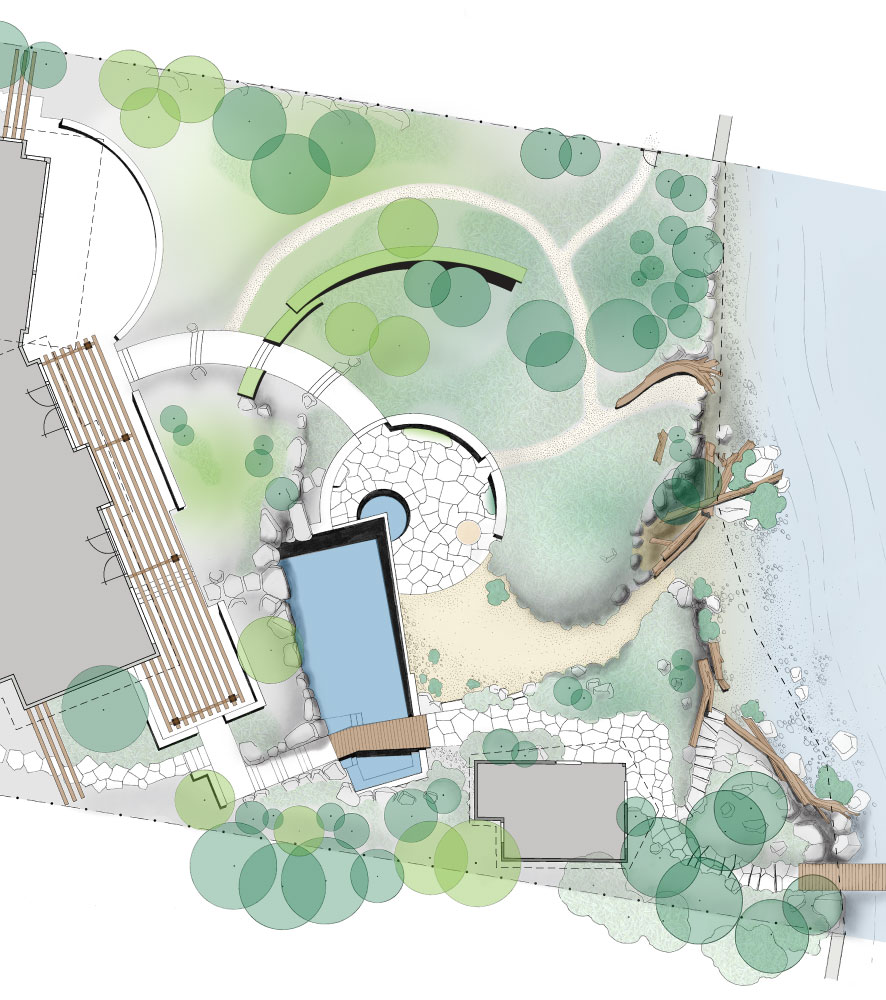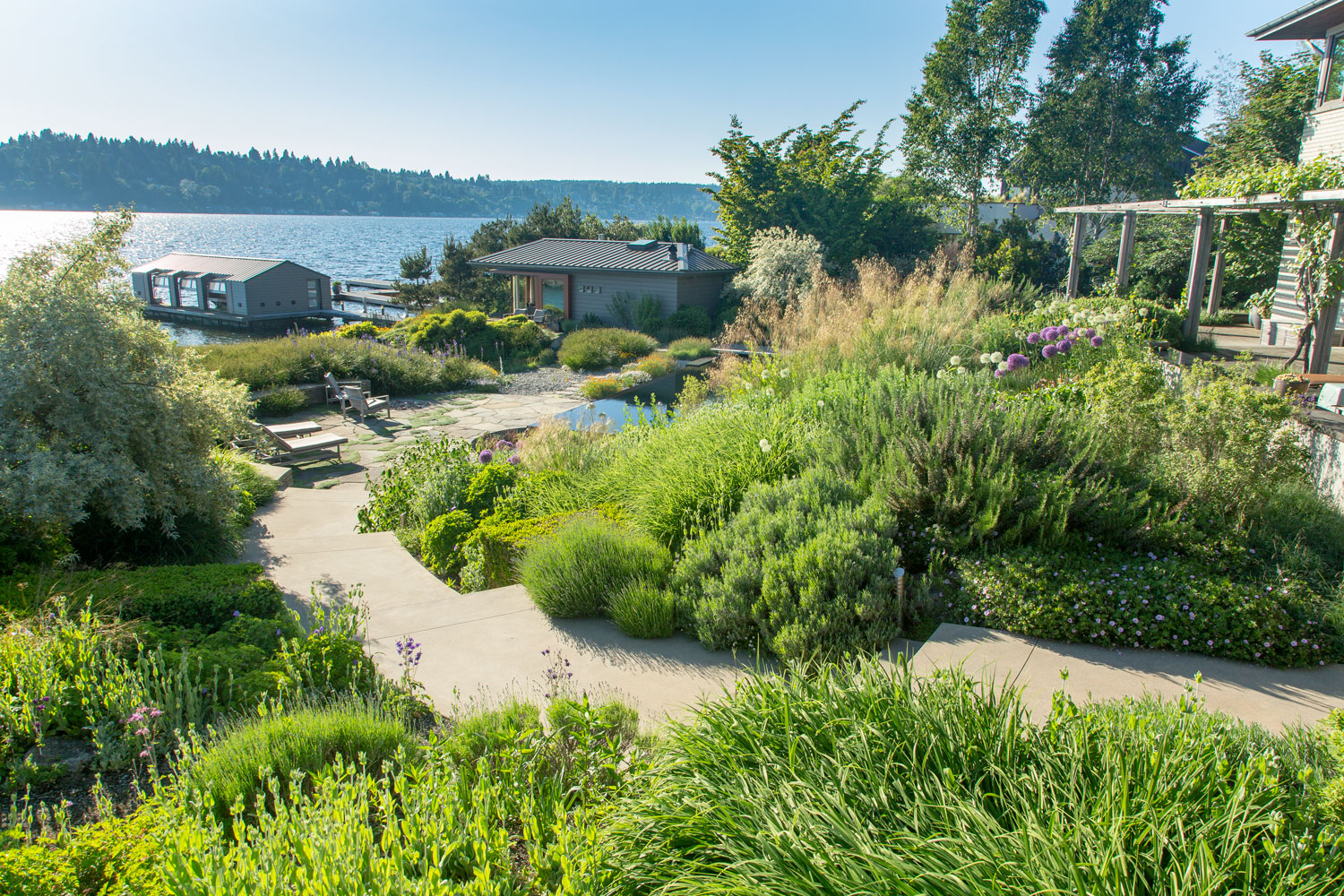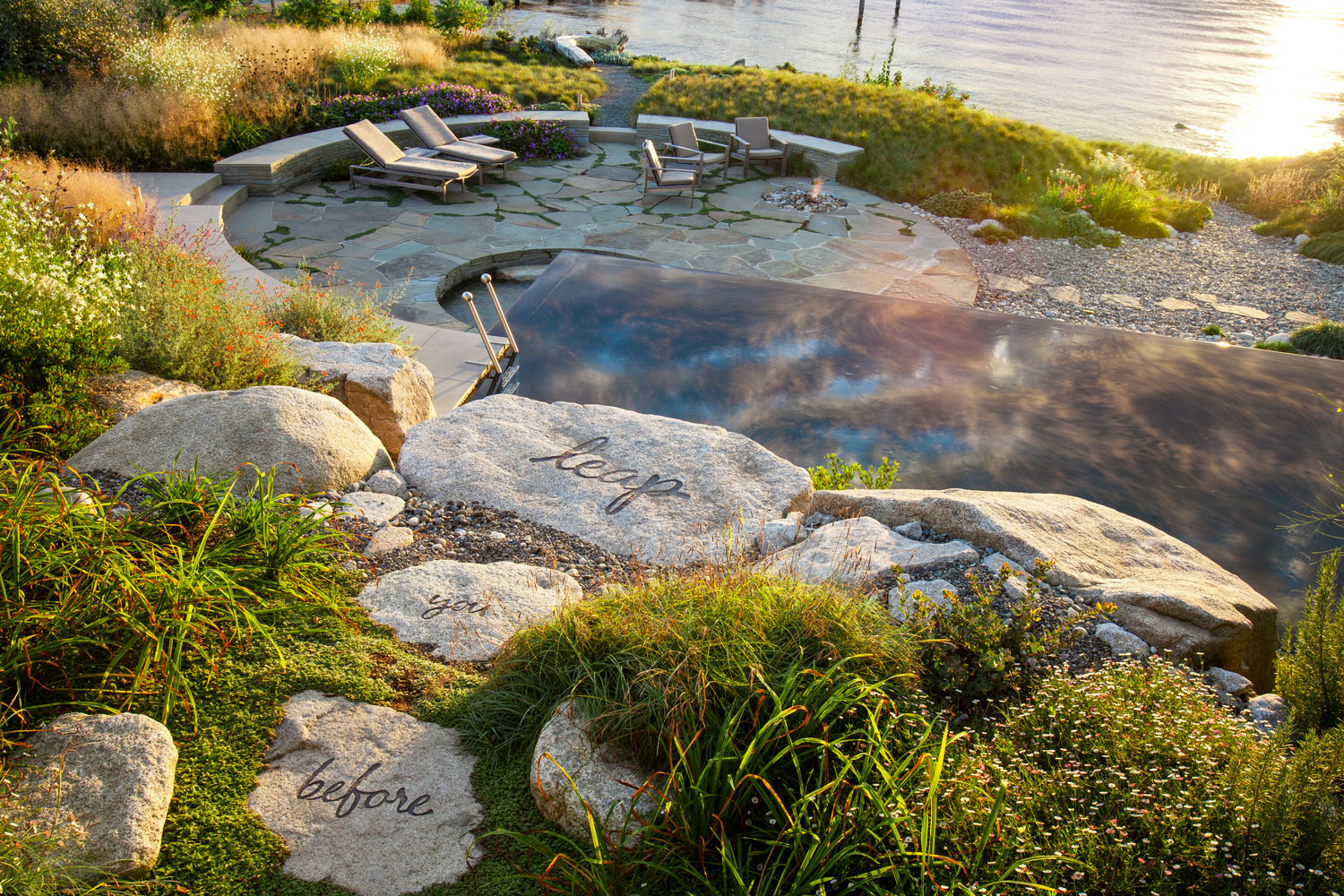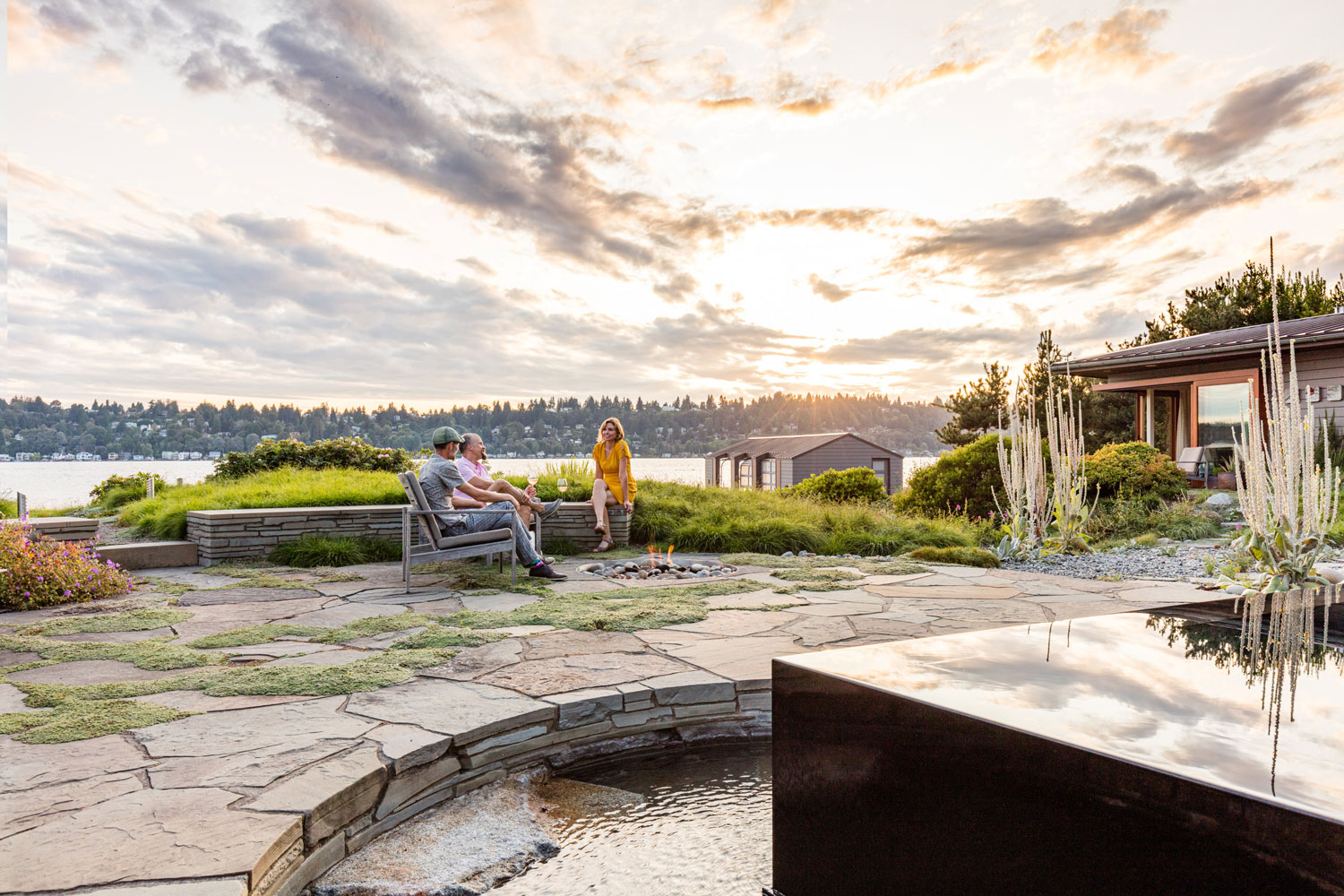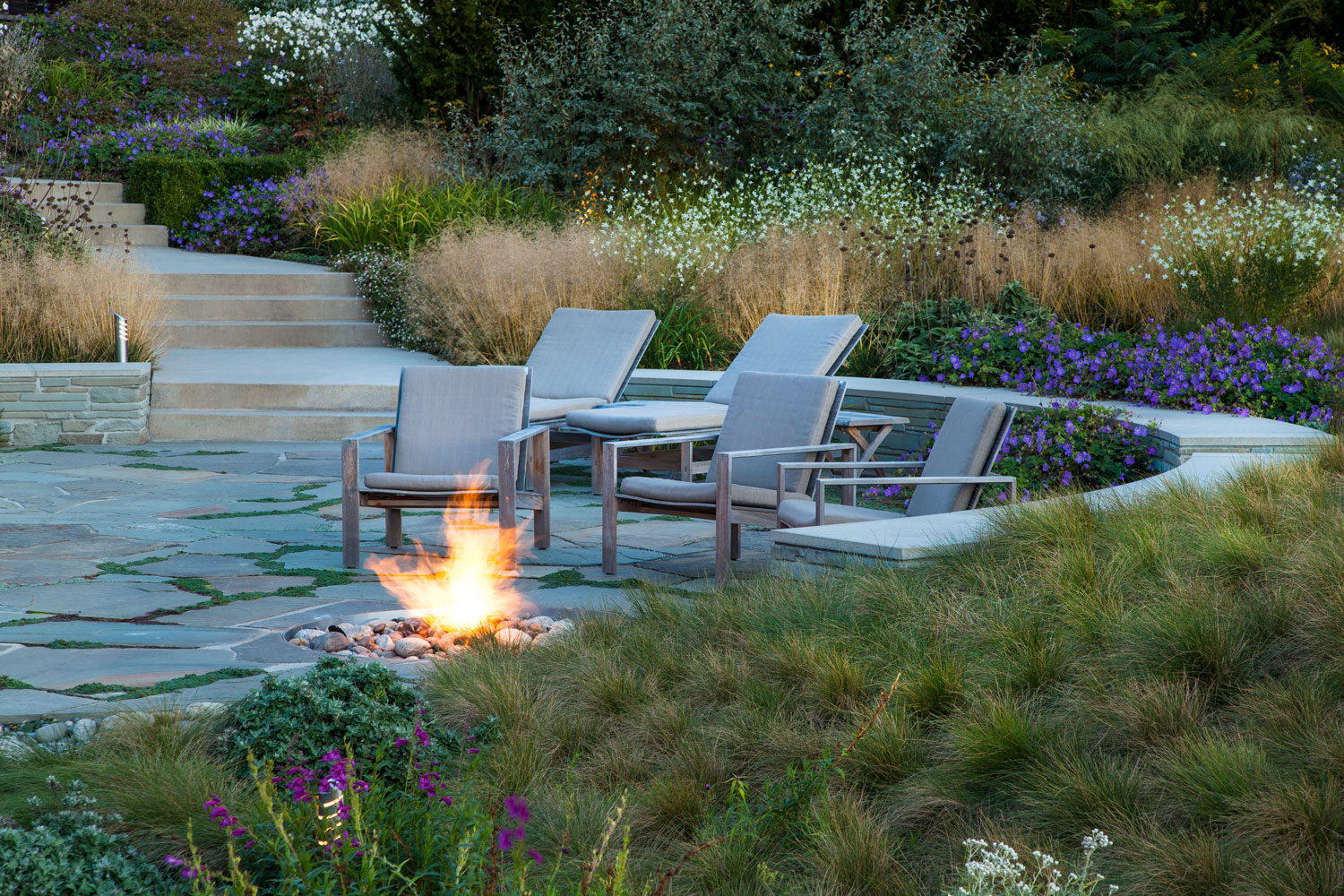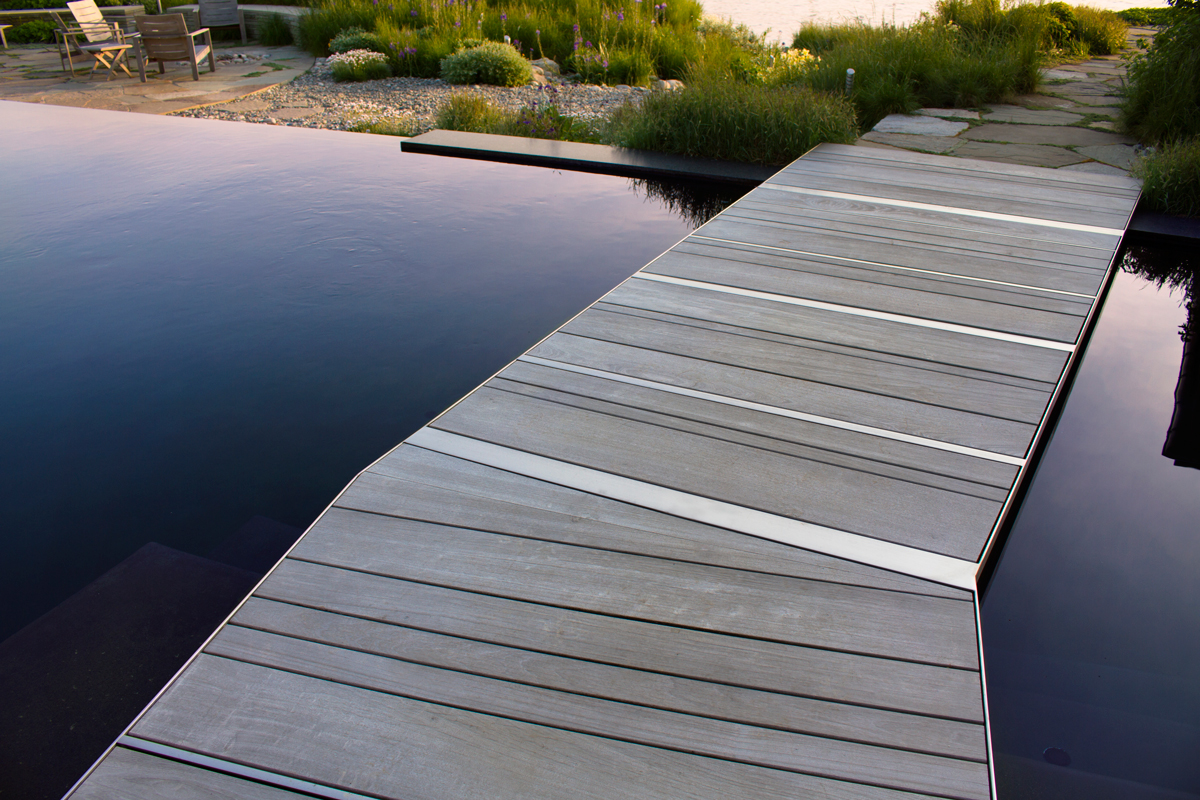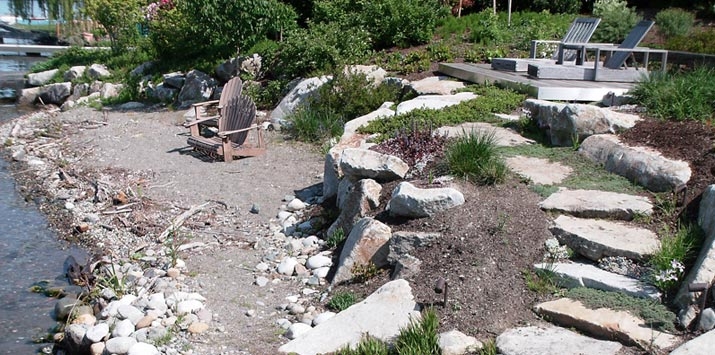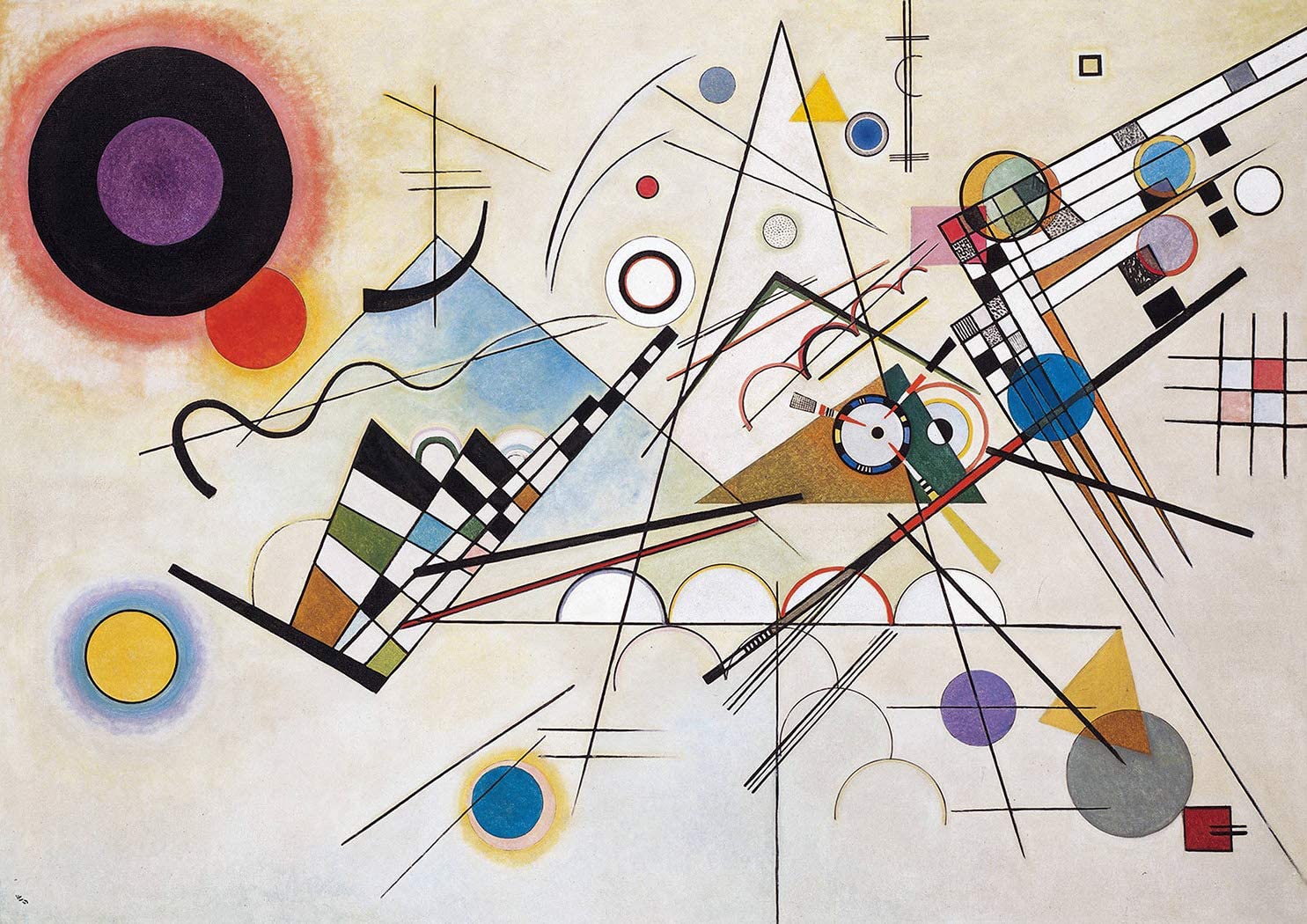
Art As Inspiration:
Wassily Kandinsky’s Composition VIII
November 25, 2020 | AUTHOR: Paul R Broadhurst
Kandinsky (Russia, 1866-1944) was a pioneer of abstract art. With his Composition VIII, Kandinsky has a whirling array of shapes and motifs imparting unique visual energy.
Following in the footsteps of his fascination with dynamism and tension, I, too, became absorbed by the relationships between shapes and the ensuing possibilities of bringing this real-world interpretation to the landscape.
Unlike paintings, landscapes have a living component. In harmony with the design is a bold reassertion of the natural world. Specifically, a new rolling topography – studded with a Pacific Northwest meadow – leads to a rewilded shoreline. A circle centers the layout and is punctured by an acute angle. Other circles, too, are spun off from this point to be dashed by sweeping curves. The design is both playful and modern.
The first order of business was to create a living shoreline and to bring plants and nature back to the land. The question then became how best to engage people with the space?
Too often, native restorations in an urban context look unloved and are misunderstood; this is where Composition VIII proved most useful. Kandinsky’s playfulness was used to inspire the design of people-related elements and provided clues for spatial organization and circulation.
Ideas from the painting were overlain on to the now more natural tableau. The pool, vaguely triangular, punctures the round catchment basin for the pools’ infinity edge and directly references Kandinsky’s work. It creates a dynamic tension at the round countersunk terrace, the main social space for the landscape.
The central curved staircase is to be seen as a dashing swoop. The arc of the hedge is another curve spun off from the center. The fire pit is a small circle flung free from its orbit. Other pathways – providing a flow of circulation – were designed to connect these points of interest within the design and were considered compositional elements. Some new departures were taken also: a sectional study of a chambered nautilus guided the step placement on the main path, and the dark pool (an abstract volume) becomes an opportunity to meditate on the reflection of clouds and light.
While primarily a landscape of waterside rehabilitation, A Shoreline Reimagined also acknowledges the notion of ‘Garden’: a term freighted with meaning for thousands of years.
It is not a wild place, but rather, within its urban context, a hybrid space part wild and part garden, a place adapted by people. The design of such hybrid spaces can be a hopeful statement for our times: an enriching space for humans and nature alike. Playful and imaginative to keep our fickle human interest piqued, yet diverse and woolly enough to sustain nature.
Countersunk Terrace and Curved Stairway
Photo: Andrew Buchanan
Served by the main pathway, the circular terrace is the designs’ most intensively used people-space. The concentric rings of the sitting walls can seat overspill capacity for larger events. Playful antics in the pool can be enjoyed. A grade change allows plants to press in.
Additional Insight and Information
A Shoreline Re-Imagined
Playful, modern yet natural, the design has a whirling array of shapes and motifs — circles are spun off from a central point to be punctured by acute angles and dashed by sweeping curves. Yet within all of this the newly found natural elements press in and assert themselves.
Click Here to View Project

From its origins under the boughs of mature Cedars to a conclusion at the shoreline, a stylized Northwest stream is used as a narrative thread to weave together relationships between built forms and nature.

